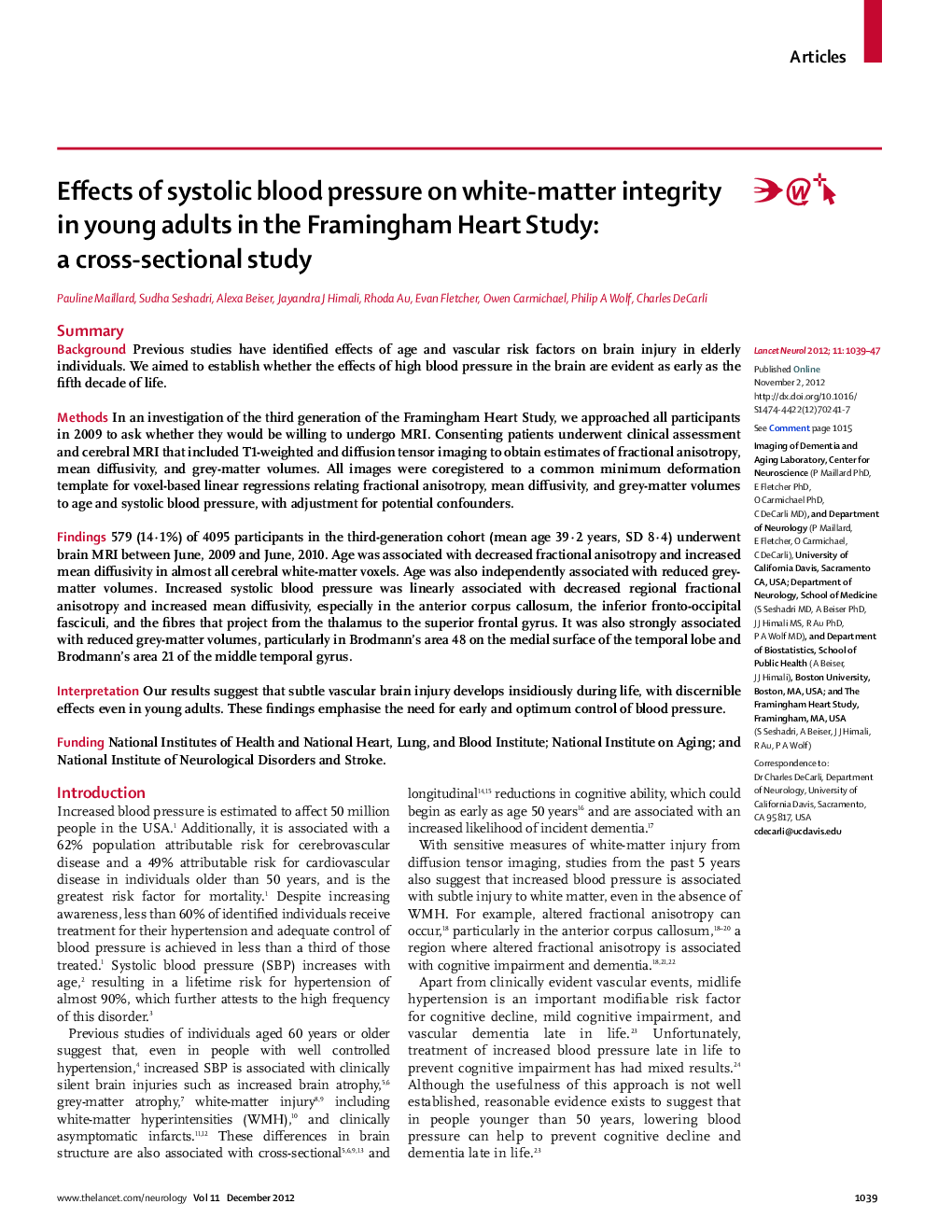| Article ID | Journal | Published Year | Pages | File Type |
|---|---|---|---|---|
| 3066508 | The Lancet Neurology | 2012 | 9 Pages |
SummaryBackgroundPrevious studies have identified effects of age and vascular risk factors on brain injury in elderly individuals. We aimed to establish whether the effects of high blood pressure in the brain are evident as early as the fifth decade of life.MethodsIn an investigation of the third generation of the Framingham Heart Study, we approached all participants in 2009 to ask whether they would be willing to undergo MRI. Consenting patients underwent clinical assessment and cerebral MRI that included T1-weighted and diffusion tensor imaging to obtain estimates of fractional anisotropy, mean diffusivity, and grey-matter volumes. All images were coregistered to a common minimum deformation template for voxel-based linear regressions relating fractional anisotropy, mean diffusivity, and grey-matter volumes to age and systolic blood pressure, with adjustment for potential confounders.Findings579 (14·1%) of 4095 participants in the third-generation cohort (mean age 39·2 years, SD 8·4) underwent brain MRI between June, 2009 and June, 2010. Age was associated with decreased fractional anisotropy and increased mean diffusivity in almost all cerebral white-matter voxels. Age was also independently associated with reduced grey-matter volumes. Increased systolic blood pressure was linearly associated with decreased regional fractional anisotropy and increased mean diffusivity, especially in the anterior corpus callosum, the inferior fronto-occipital fasciculi, and the fibres that project from the thalamus to the superior frontal gyrus. It was also strongly associated with reduced grey-matter volumes, particularly in Brodmann's area 48 on the medial surface of the temporal lobe and Brodmann's area 21 of the middle temporal gyrus.InterpretationOur results suggest that subtle vascular brain injury develops insidiously during life, with discernible effects even in young adults. These findings emphasise the need for early and optimum control of blood pressure.FundingNational Institutes of Health and National Heart, Lung, and Blood Institute; National Institute on Aging; and National Institute of Neurological Disorders and Stroke.
